Scott Olson / Getty Images
BuzzFeed News has reporters across five continents bringing you trustworthy stories about the impact of the coronavirus. To help keep this news free, become a member and sign up for our newsletter, Outbreak Today.
The days are long, your skin remembers what sunshine feels like again, and the trees that line your block are green and lush. In any non-pandemic year, we'd welcome summer with open arms. But with more than 1.5 million confirmed coronavirus cases in the US and nearly 100,000 deaths to date, the change in season has brought about uncertainty and frustration as stay-at-home orders continue extending.
For the past few months, many of our social lives have been restricted to the people we live with and to talking to friends through a screen. However, there are signs that people are becoming more lax about social distancing measures: flocking to parks and beaches and being less diligent about wearing masks. With summer around the corner and with lawmakers discussing how to reopen businesses, some people may begin expanding their "quaranteam" — the circle of people that they are socially isolating with — to include more people.
Dr. Gregory Poland, a professor of medicine and infectious diseases at the Mayo Clinic and the director of the Mayo Vaccine Research Group, cautioned that while nobody is totally safe from the coronavirus under any circumstances, "there are things you can do to be safer."
"There is no such thing as safe. All we can do is mitigate or reduce risk," he told BuzzFeed News.
If you've been trying to sort through the complications of building out your quarantine circle, you're not alone. BuzzFeed News asked five public health experts and researchers what to take into account when considering whether to see friends and family in person — or if you should even be socializing at this point. (Some comments have been edited and condensed for clarity.)
For the past few months, many of our social lives have been restricted to the people we live with and to talking to friends through a screen. However, there are signs that people are becoming more lax about social distancing measures: flocking to parks and beaches and being less diligent about wearing masks. With summer around the corner and with lawmakers discussing how to reopen businesses, some people may begin expanding their "quaranteam" — the circle of people that they are socially isolating with — to include more people.
Dr. Gregory Poland, a professor of medicine and infectious diseases at the Mayo Clinic and the director of the Mayo Vaccine Research Group, cautioned that while nobody is totally safe from the coronavirus under any circumstances, "there are things you can do to be safer."
"There is no such thing as safe. All we can do is mitigate or reduce risk," he told BuzzFeed News.
If you've been trying to sort through the complications of building out your quarantine circle, you're not alone. BuzzFeed News asked five public health experts and researchers what to take into account when considering whether to see friends and family in person — or if you should even be socializing at this point. (Some comments have been edited and condensed for clarity.)
What should I be thinking about when adding someone to my quarantine circle?
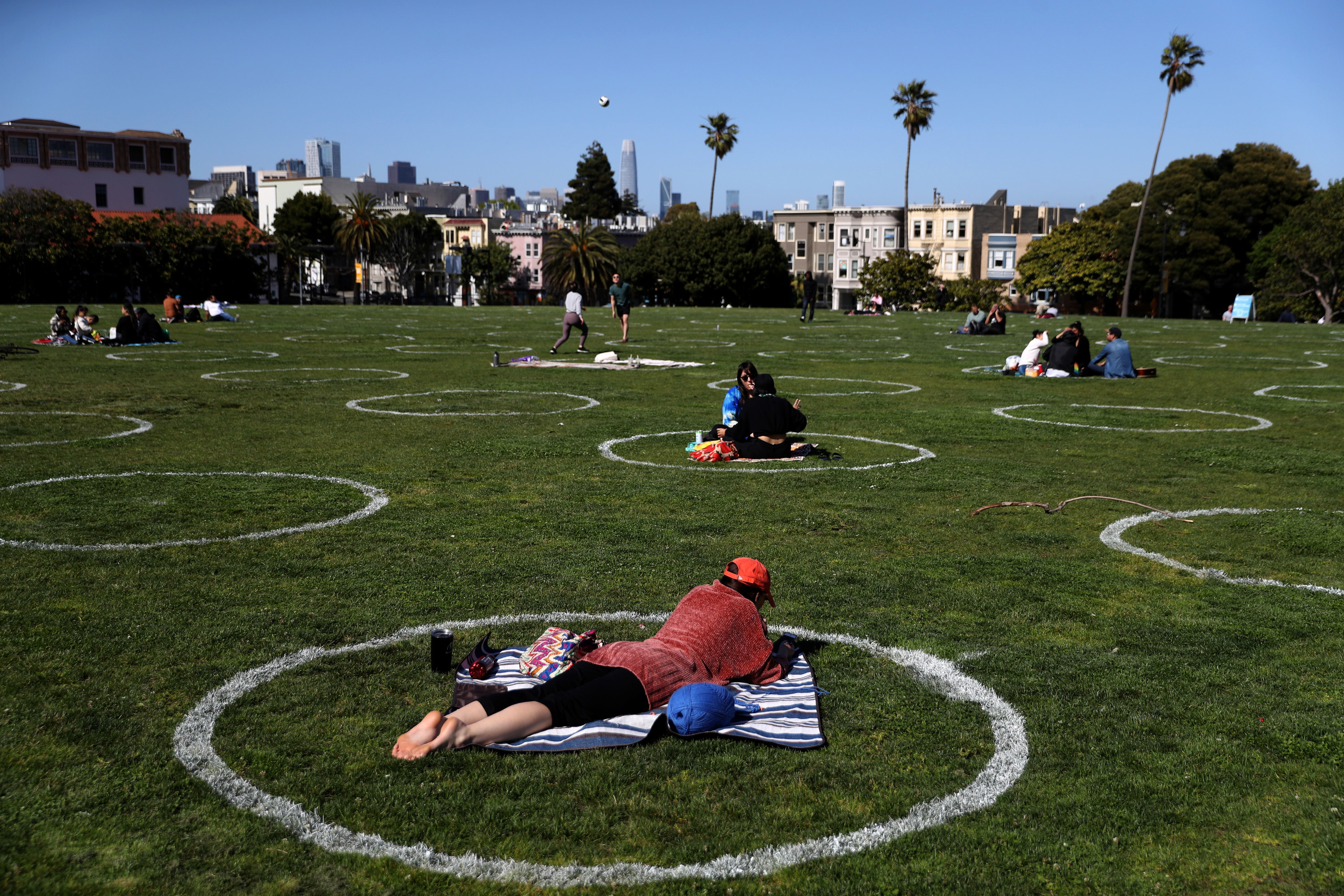
Justin Sullivan / Getty Images
People sit in social distancing circles at Dolores Park in San Francisco, California.
Dr. Gerardo Chowell, Department of Population Health Sciences chair and professor at the Georgia State University School of Public Health: Number one, I think you need to trust that group of people, let's say that's a family, or a friend, or a couple. I think it's easier if you can identify that group as living in a single unit, in the same household. Those are people you trust that if you ask them, 'have you been in contact or interacted with someone else in the last couple of weeks?' they would tell you [honestly] yes or no.
If that circle you want to join has been in quarantine vigorously — the same way you have — I think it's fine, the risk is pretty low.
Once you make that decision to interact, that doesn't mean you're a group forever. That only counts for one instance, because maybe next week after the social gathering, they had another meeting with other people. So the next time you want to gather again, you have to reassess.
Poland: If you live in your home by yourself and don't go out, from a COVID perspective, that’s the safest thing you can do. For every additional person or place that you go to, you add risk.
And it really depends on geography. If you’re in rural Kansas where there’s no community transmission and people haven't traveled, no problem. If you’re in New York City or LA, there’s still community transmission. You’re basically saying, I'm definitely and significantly increasing my risk of infection, but I'm going to go for it. That’s your decision. Everybody has their own values.
Dr. Vincent Racaniello, Higgins Professor of Microbiology & Immunology at Columbia University: A big factor depends on where you are in the US, because if you're in New York City, we still have 3,000 infections being recorded a day. So the likelihood that someone you're with is infected is still pretty high, whereas if you're in a rural area which hasn't experienced as much infections, you can do different things.
So that's the first thing you have to take into account: where are you in the US and what's been the history [of infection rates]. And you should also keep an eye on the daily case counts; they're released by most departments of health.
Dr. Scott Meschke, Professor and Assistant Chair of Environmental and Occupational Health Sciences at the University of Washington: My first recommendation is follow your government guidelines, so whatever your governor suggests, that's what I would recommend. In Washington, at least in King County, we're still on stay at home [orders]. For us, even expanding your circle at this point would not be a recommended idea.
This isn't just about individuals. This is about public health and the spread [of the virus], and the fact that we don't know who's a carrier and who's not, for the most part. If you were in a situation where everyone was getting tested daily like in the White House, then maybe you could interact without masks and things like that. But you see what happened in the White House — there were several aides [who got infected].
If that circle you want to join has been in quarantine vigorously — the same way you have — I think it's fine, the risk is pretty low.
Once you make that decision to interact, that doesn't mean you're a group forever. That only counts for one instance, because maybe next week after the social gathering, they had another meeting with other people. So the next time you want to gather again, you have to reassess.
Poland: If you live in your home by yourself and don't go out, from a COVID perspective, that’s the safest thing you can do. For every additional person or place that you go to, you add risk.
And it really depends on geography. If you’re in rural Kansas where there’s no community transmission and people haven't traveled, no problem. If you’re in New York City or LA, there’s still community transmission. You’re basically saying, I'm definitely and significantly increasing my risk of infection, but I'm going to go for it. That’s your decision. Everybody has their own values.
Dr. Vincent Racaniello, Higgins Professor of Microbiology & Immunology at Columbia University: A big factor depends on where you are in the US, because if you're in New York City, we still have 3,000 infections being recorded a day. So the likelihood that someone you're with is infected is still pretty high, whereas if you're in a rural area which hasn't experienced as much infections, you can do different things.
So that's the first thing you have to take into account: where are you in the US and what's been the history [of infection rates]. And you should also keep an eye on the daily case counts; they're released by most departments of health.
Dr. Scott Meschke, Professor and Assistant Chair of Environmental and Occupational Health Sciences at the University of Washington: My first recommendation is follow your government guidelines, so whatever your governor suggests, that's what I would recommend. In Washington, at least in King County, we're still on stay at home [orders]. For us, even expanding your circle at this point would not be a recommended idea.
This isn't just about individuals. This is about public health and the spread [of the virus], and the fact that we don't know who's a carrier and who's not, for the most part. If you were in a situation where everyone was getting tested daily like in the White House, then maybe you could interact without masks and things like that. But you see what happened in the White House — there were several aides [who got infected].
Are there any obvious red flags I should look out for when deciding who to let into my circle?
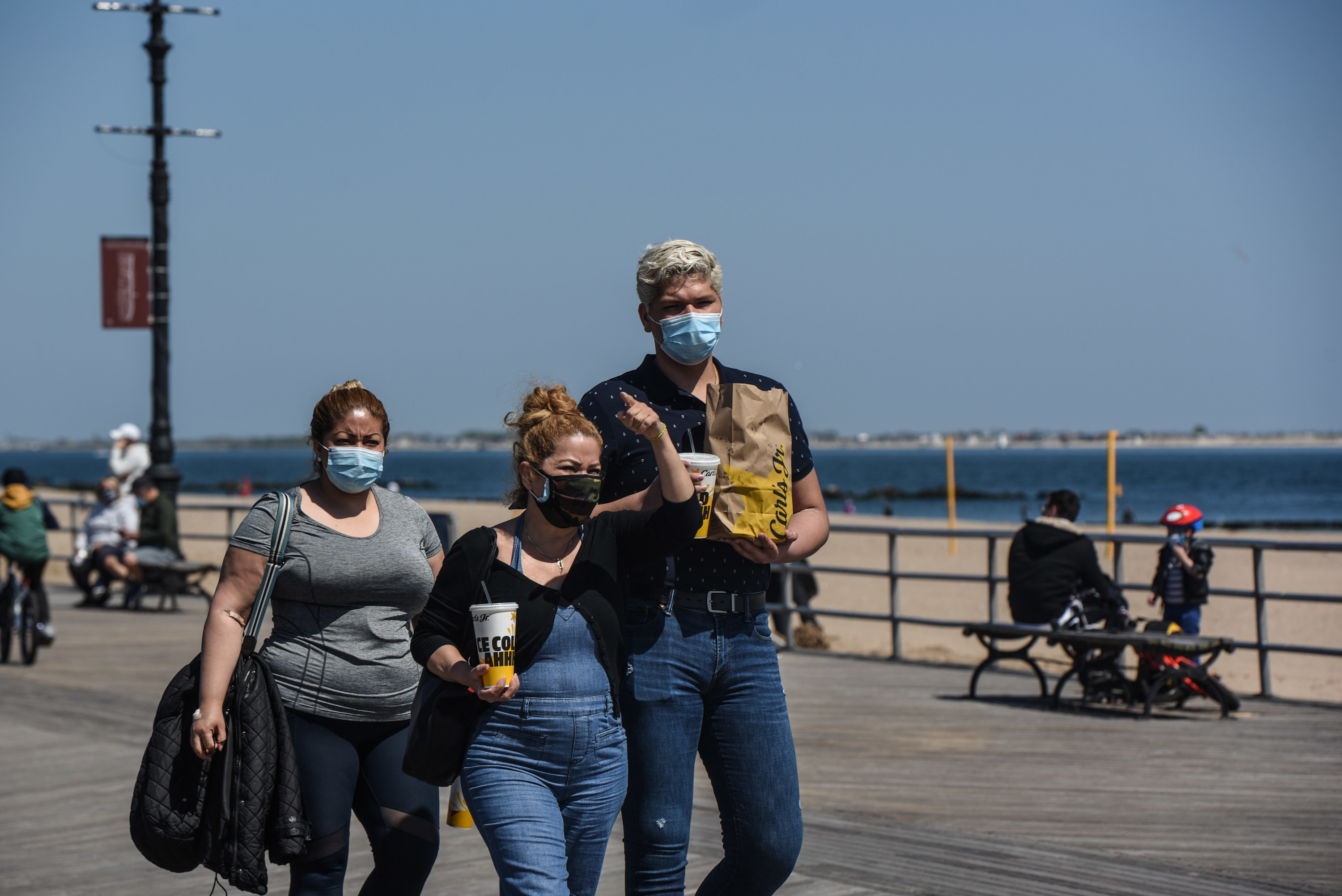
Stephanie Keith / Getty Images
People walk down the boardwalk while wearing protective masks in the Coney Island, New York City.
Poland: Your assessment of their level of respiratory and hand etiquette and hygiene, and where they've been and what they've done. If you talk to them on the phone and you say, 'hey, come on over we're going to have a barbecue,' and they're, you know, [imitates sniffles] doing that kind of thing, I'd say no.
You would insist that nobody comes into your home without taking their shoes off and sanitizing their hands, and maybe wearing a mask. Your social connections should be probably 10, 12 — maybe even bigger — feet apart. There's so many specific permutations in all of this. It depends on who you are, who the person is, and what they do, where they've been. What kind of precautions do they take?
Meschke: If they're coughing, sneezing, not wearing a mask, clearly not abiding by other social distancing [measures], I might minimize my contact with that person. It's a contextual thing, because as we're moving through the different phases of reopening, the recommendations don't really change until we're sure the virus is gone. Good practices are good practices.
Racaniello: I would be careful of older people. If they're older, we know they get the most serious diseases — anybody over 65-ish [years old], be particularly careful about them. You don't want to infect them, because you may be infected yourself and not know it.
You would insist that nobody comes into your home without taking their shoes off and sanitizing their hands, and maybe wearing a mask. Your social connections should be probably 10, 12 — maybe even bigger — feet apart. There's so many specific permutations in all of this. It depends on who you are, who the person is, and what they do, where they've been. What kind of precautions do they take?
Meschke: If they're coughing, sneezing, not wearing a mask, clearly not abiding by other social distancing [measures], I might minimize my contact with that person. It's a contextual thing, because as we're moving through the different phases of reopening, the recommendations don't really change until we're sure the virus is gone. Good practices are good practices.
Racaniello: I would be careful of older people. If they're older, we know they get the most serious diseases — anybody over 65-ish [years old], be particularly careful about them. You don't want to infect them, because you may be infected yourself and not know it.
What if one of us had the coronavirus, but recovered?
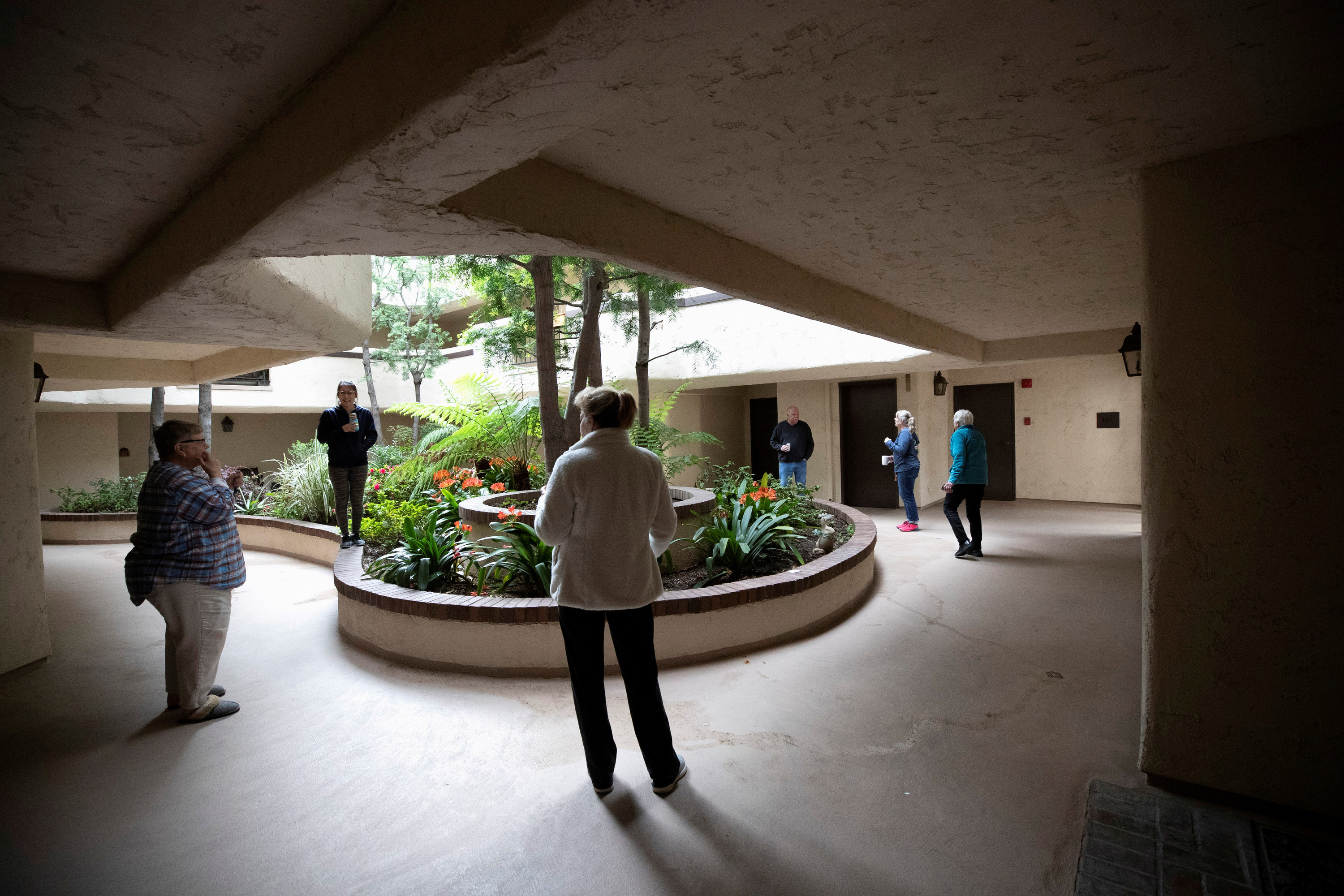
Mario Anzuoni / Reuters
Residents take part in a socializing hour in the courtyard of their apartment complex in Pasadena, California.
Racaniello: There's no reason to stay away from someone who's recovered. They can definitely participate. They should still wear a face mask to be careful. We're not 100% sure yet if recovery means you're not going to get infected again.
Poland: Well, what you don't know is whether they're still shedding [the virus]. The fact that they've had it before, we know very little, close to nothing, about — are they protected and the duration of that protection. People naively say, 'oh I was positive, or I had it and I'm fine now.' Maybe, maybe not. The virus could very well change by this fall.
Let's say I was going to have a friend over — I'd ask them to use their bathroom at home so that they don't use the bathroom at my house. We'd probably sit outside, separated. And I probably wouldn't even do that until they had been symptom-free and recovered for at least a month.
Chowell: You would want to wait 3-4 weeks to be sure that the individual has fully recovered and is clear of the virus completely.
Poland: Well, what you don't know is whether they're still shedding [the virus]. The fact that they've had it before, we know very little, close to nothing, about — are they protected and the duration of that protection. People naively say, 'oh I was positive, or I had it and I'm fine now.' Maybe, maybe not. The virus could very well change by this fall.
Let's say I was going to have a friend over — I'd ask them to use their bathroom at home so that they don't use the bathroom at my house. We'd probably sit outside, separated. And I probably wouldn't even do that until they had been symptom-free and recovered for at least a month.
Chowell: You would want to wait 3-4 weeks to be sure that the individual has fully recovered and is clear of the virus completely.
Say I have a kid who's really lonely at home by themself, and I want to let another small family into my circle. Should I look out for anything different with children involved?
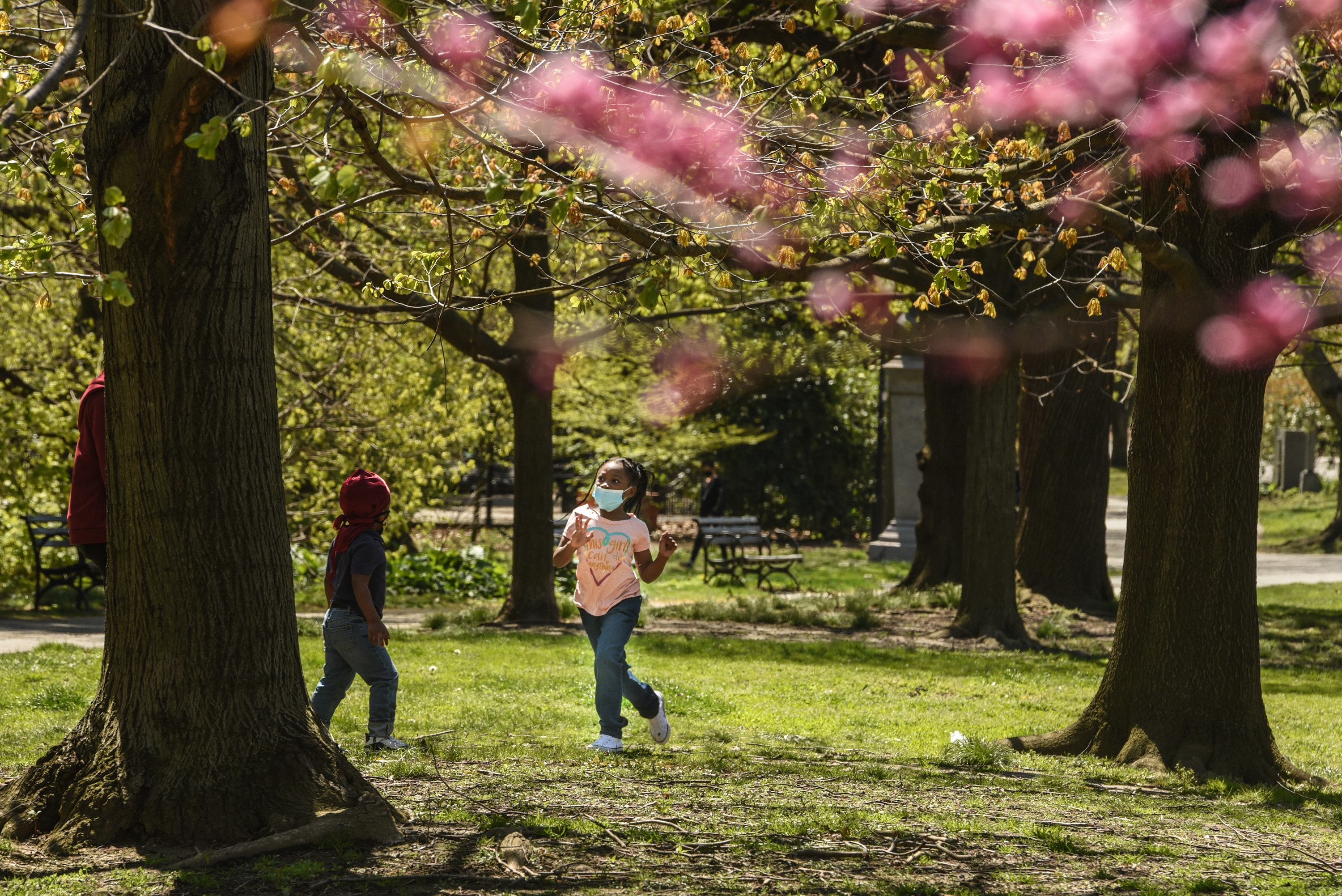
Stephanie Keith / Getty Images
A child wearing a protective mask plays in Prospect Park in New York City.
Poland: It's imponderable that you would have now quantifiably increased your risk of getting infected [if you invite another child into your circle]. Kids can be infected and not know it, or parents not know it. They are the least knowledgable and adherent about respiratory and hand etiquette, because they don't know.
Meschke: The biggest concern with kids right now is that we used to think that they weren't an at-risk group. But in fact, some of the newer evidence — most states are now reporting some kids that are having some more severe reactions with COVID. Again, I would listen to your state health department and your governor's orders. I would not seek to expand [my circle] until it was safe to do so.
Racaniello: It depends what they want to do. Kids like to be close to each other when they play, they want to run around and they're going to end up being close to each other. So it's harder to manage that. I'm not sure kids would be happy sitting across from each other and talking like adults would.
You could try to get them to wear a face mask, and you could make a game out of it, I guess — you could have cool face masks that they can wear. But the bottom line is kids don't get very sick, there are rare exceptions to that. The real concern is if they're infected then they're bringing it to someone else who's older. But I would try to have them play apart if possible.
Meschke: The biggest concern with kids right now is that we used to think that they weren't an at-risk group. But in fact, some of the newer evidence — most states are now reporting some kids that are having some more severe reactions with COVID. Again, I would listen to your state health department and your governor's orders. I would not seek to expand [my circle] until it was safe to do so.
Racaniello: It depends what they want to do. Kids like to be close to each other when they play, they want to run around and they're going to end up being close to each other. So it's harder to manage that. I'm not sure kids would be happy sitting across from each other and talking like adults would.
You could try to get them to wear a face mask, and you could make a game out of it, I guess — you could have cool face masks that they can wear. But the bottom line is kids don't get very sick, there are rare exceptions to that. The real concern is if they're infected then they're bringing it to someone else who's older. But I would try to have them play apart if possible.
What would I want to know about a friend's recent movement and social activity if I'm considering hanging out with them?
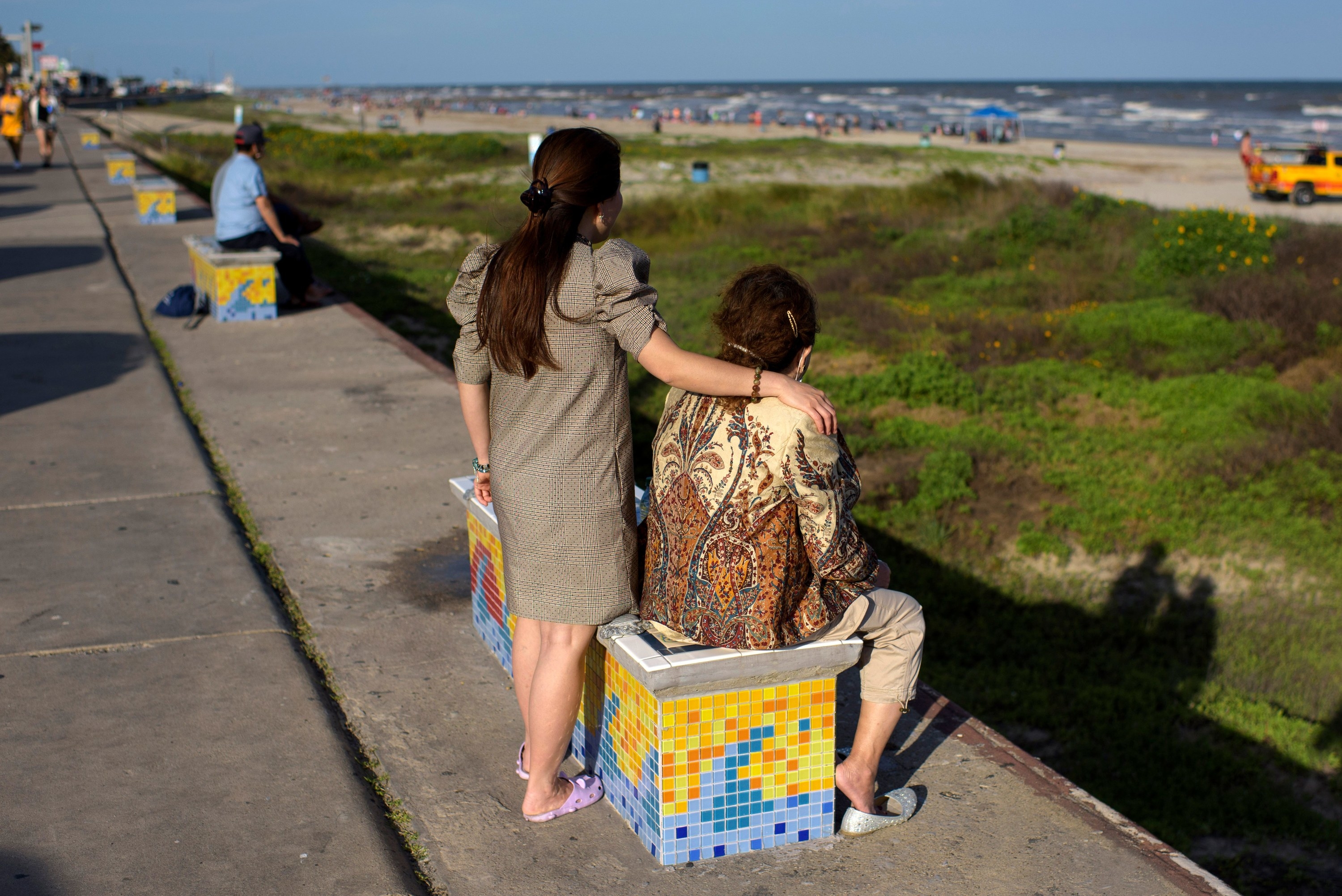
Mark Felix / Getty Images
Beachgoers at Galveston Beach in Texas.
Poland: I'd basically say, have you traveled, have you had any exposure, have you basically been quarantined at home and working from home? That's what we did: we had 3 couples over, we have a big driveway, and we said, 'use the bathroom before you come, bring your own soft drinks, bring your own lawn chairs, and we're going to sit about 12-15 feet apart.'
And all those 3 couples had been meticulous about their own kind of quarantine and social distancing. If they'd told me, 'we just got back from a cruise a week ago,' well, sorry, not a good idea for you to come over.
Chowell: So — who have you interacted with in the past couple of weeks? Have you seen any other friends or family members, if they have come to your place or if you visited them? Have you used public transportation? I think the most important one is if you have been in a public setting, did you wear a face mask?
And all those 3 couples had been meticulous about their own kind of quarantine and social distancing. If they'd told me, 'we just got back from a cruise a week ago,' well, sorry, not a good idea for you to come over.
Chowell: So — who have you interacted with in the past couple of weeks? Have you seen any other friends or family members, if they have come to your place or if you visited them? Have you used public transportation? I think the most important one is if you have been in a public setting, did you wear a face mask?
So I've opened my quarantine circle to include some friends. Should we wear masks?

Justin Heiman / Getty Images
Pedestrians wear protective face masks in New York City.
Poland: I think if you were outside, and people haven't been exposed and sick, i think you're fine without a mask, appropriately distanced. If you were closer [than 12-15 feet] I'd wear a mask.
Meschke: I don't think [wearing a mask] a bad idea. Even though we're on lockdown — stay home, stay safe, that kind of thing — we're not 100% not leaving the home, not the way Italy did it, not the way other places in the world have done it. So we're already interacting in public. So it's the same kind of factors that you're going to want to be aware of: you still want to keep that 6 feet, good hygiene, masks.
This is a perfect time to be risk averse. Use common sense. Use the guidelines that are being provided by governments to minimize the risk of transmission.
Racaniello: I always warn people, no matter where we are, the virus is always going to be around. We're not going to get rid of it. There's going to be someone around who has it, so until we have a vaccine, which is going to be at least until the end of this year, maybe next year, you still have to be careful. And that means you should still do social distancing, you should keep away from people, and as much as possible wear a face mask.
Meschke: I don't think [wearing a mask] a bad idea. Even though we're on lockdown — stay home, stay safe, that kind of thing — we're not 100% not leaving the home, not the way Italy did it, not the way other places in the world have done it. So we're already interacting in public. So it's the same kind of factors that you're going to want to be aware of: you still want to keep that 6 feet, good hygiene, masks.
This is a perfect time to be risk averse. Use common sense. Use the guidelines that are being provided by governments to minimize the risk of transmission.
Racaniello: I always warn people, no matter where we are, the virus is always going to be around. We're not going to get rid of it. There's going to be someone around who has it, so until we have a vaccine, which is going to be at least until the end of this year, maybe next year, you still have to be careful. And that means you should still do social distancing, you should keep away from people, and as much as possible wear a face mask.
Can I invite them into my house?
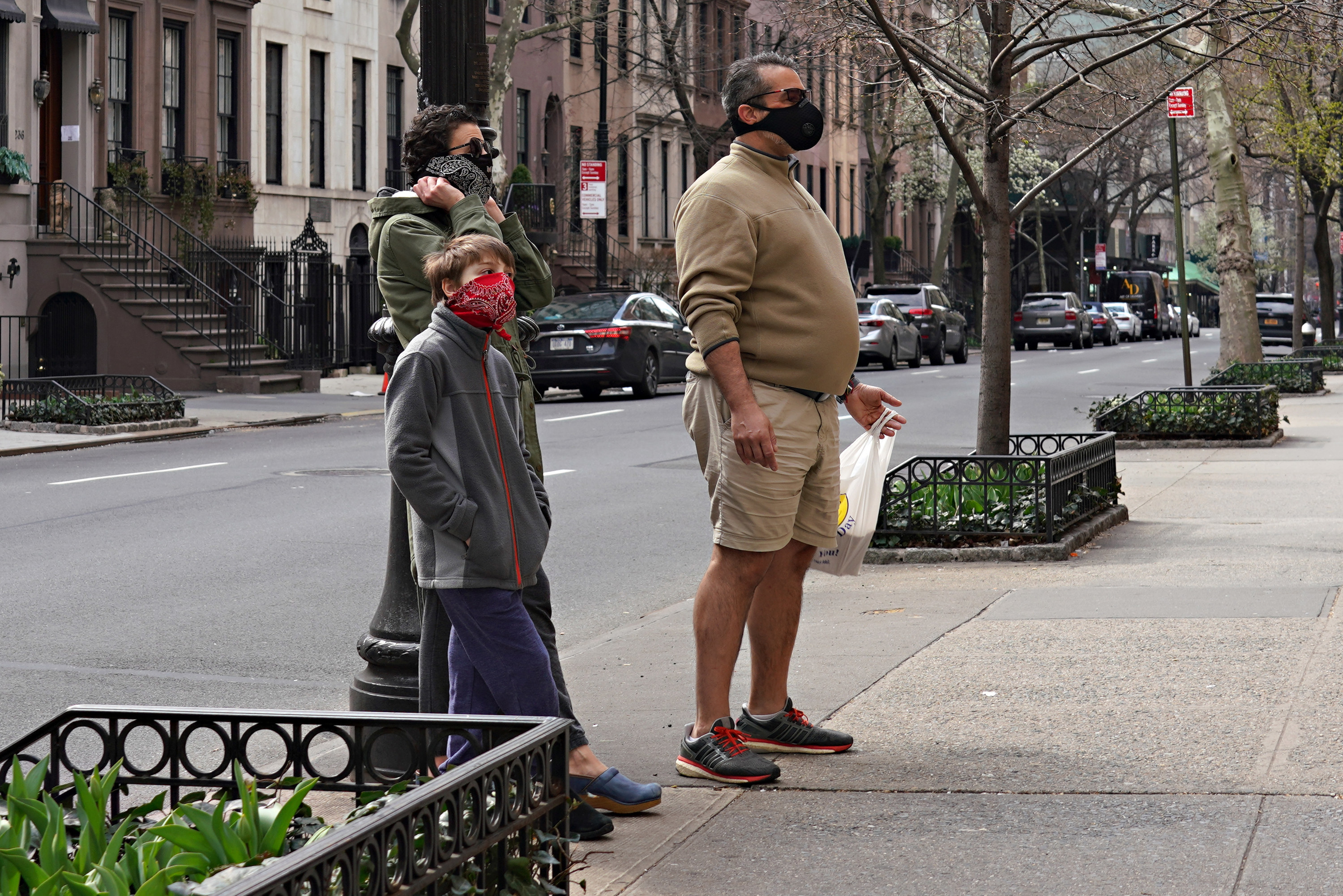
Cindy Ord / Getty Images
A family wearing face masks maintain physical distance on a sidewalk while speaking to someone inside an apartment in New York City.
Dr. Janet Baseman, Associate Dean for Public Health Practice and Department of Epidemiology professor at the University of Washington School of Public Health: It is safer to socialize outside than inside. People should be aware of, and follow, local/state public health directives and guidance in their areas. Wearing face coverings, frequent hand washing and maintaining social distancing recommendations (avoiding crowds) are all really good ideas even as things open up.
Racaniello: One thing we do know is most of the infections get transmitted indoors. Closed rooms with more than one person, those situations where you're going to be in a room with a lot of people, I would just stay away from that for a while.
But it depends who's in the apartment or house. If it's really crowded, it's not a great idea. But I think even crowded situations where you're going to be there temporarily [like to use the bathroom], you can mitigate that with a face mask. There are ways to make it safer. If you want to sit inside for a while, unless you're all wearing face masks, I wouldn't do it.
Chowell: You could invite them to your house, but you have to be very vigorous with who you invite. I would suggest [social distancing] indoors. I'm not sure who would be wearing face masks inside, but you could do it. Once they come into your home, at that point you know that that risk is essentially close to zero because they [should have] been on a strict quarantine period.
Racaniello: One thing we do know is most of the infections get transmitted indoors. Closed rooms with more than one person, those situations where you're going to be in a room with a lot of people, I would just stay away from that for a while.
But it depends who's in the apartment or house. If it's really crowded, it's not a great idea. But I think even crowded situations where you're going to be there temporarily [like to use the bathroom], you can mitigate that with a face mask. There are ways to make it safer. If you want to sit inside for a while, unless you're all wearing face masks, I wouldn't do it.
Chowell: You could invite them to your house, but you have to be very vigorous with who you invite. I would suggest [social distancing] indoors. I'm not sure who would be wearing face masks inside, but you could do it. Once they come into your home, at that point you know that that risk is essentially close to zero because they [should have] been on a strict quarantine period.
These are a lot of rules to follow and factors to consider! Is it best if I just don't hang out with people?
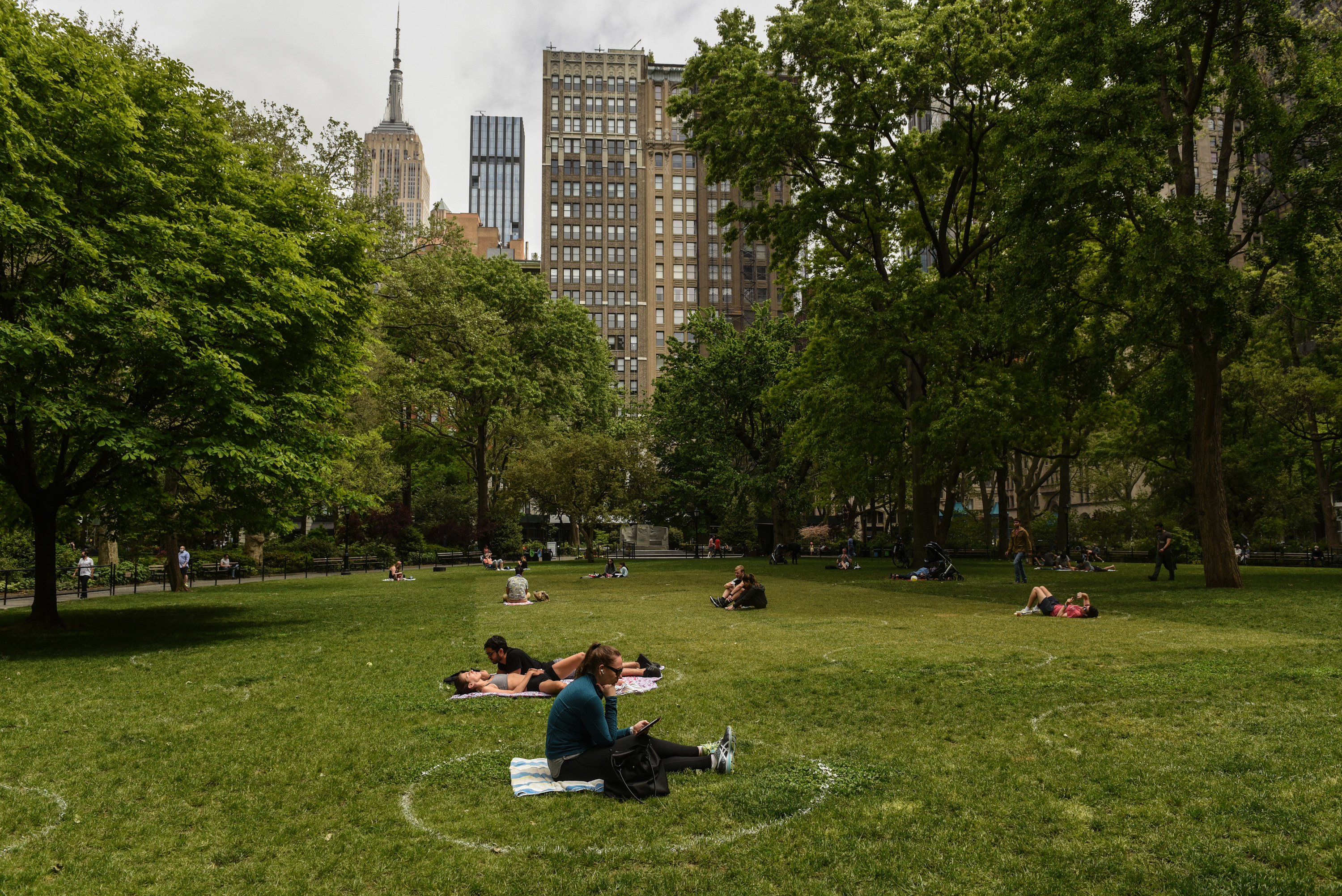
Stephanie Keith / Getty Images
People sit inside painted circles for social distancing in Madison Square Park in New York City.
Chowell: I would say yes, I think that that's the wise thing to do. I think it's possible — if you do it outside, particularly, and if you wear a face mask most of the time. It is feasible and depends on the level of risk you're prepared to take. If you go on to do this, you have to do it so that the risk is very low.
Meschke: I wouldn't recommend it at this point, until your governor says it's time to go and you can start gathering. This thing's not over despite what some of the people might think or want, and you really ought to be listening to public health recommendations. They will open when it's time to open. Nobody wants to stay closed any longer than they have to.
Racaniello: I think we need to get back together to some semblance of before. People are social animals, they like to see each other, and if they don't they're going to end up with serious issues. I do think we have to take advantage of the fact that infections are declining and try to socialize as safely as possible.
I would not discourage people at all, I would just say be safe about it. I think it's really important for people to interact to a certain extent, much more than we have in the last month or two.
Meschke: I wouldn't recommend it at this point, until your governor says it's time to go and you can start gathering. This thing's not over despite what some of the people might think or want, and you really ought to be listening to public health recommendations. They will open when it's time to open. Nobody wants to stay closed any longer than they have to.
Racaniello: I think we need to get back together to some semblance of before. People are social animals, they like to see each other, and if they don't they're going to end up with serious issues. I do think we have to take advantage of the fact that infections are declining and try to socialize as safely as possible.
I would not discourage people at all, I would just say be safe about it. I think it's really important for people to interact to a certain extent, much more than we have in the last month or two.
from Fruitty Blog https://ift.tt/2WZhXUf
via IFTTT

No comments:
Post a Comment